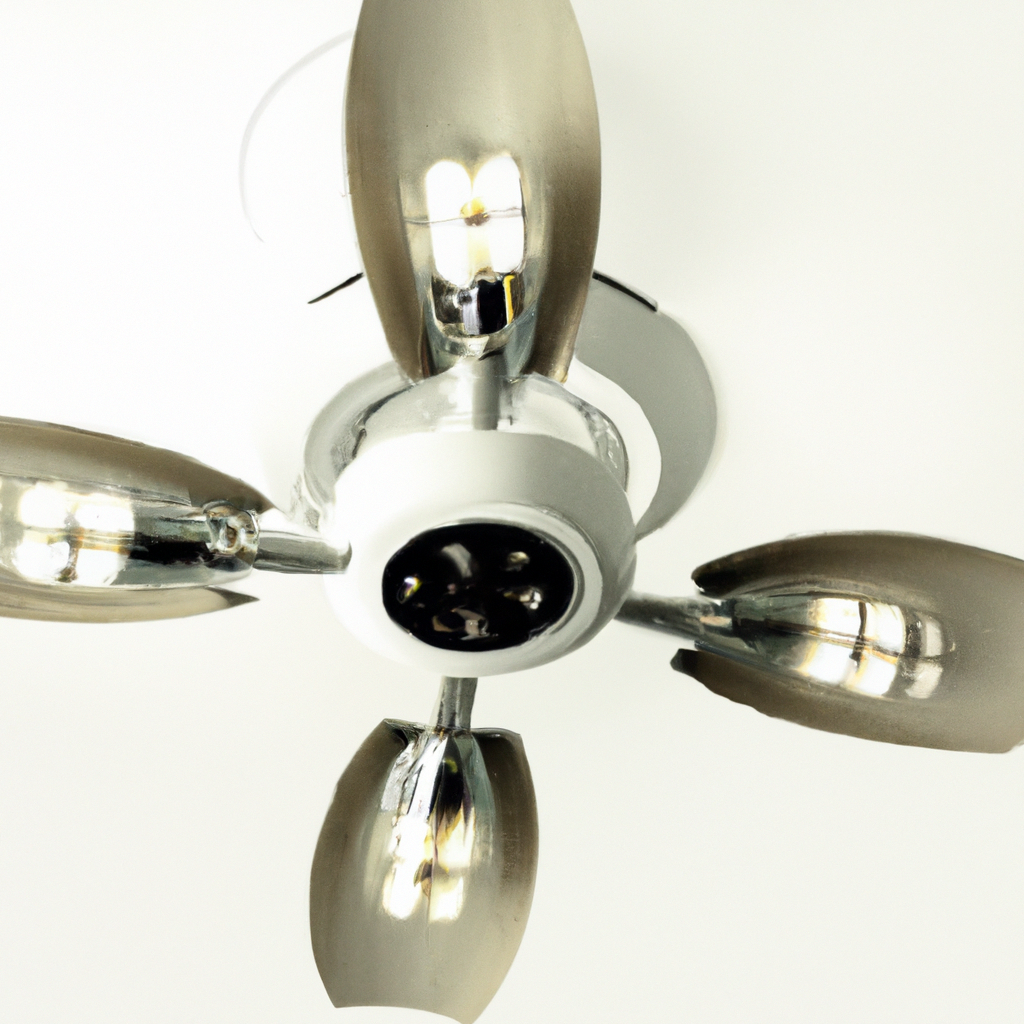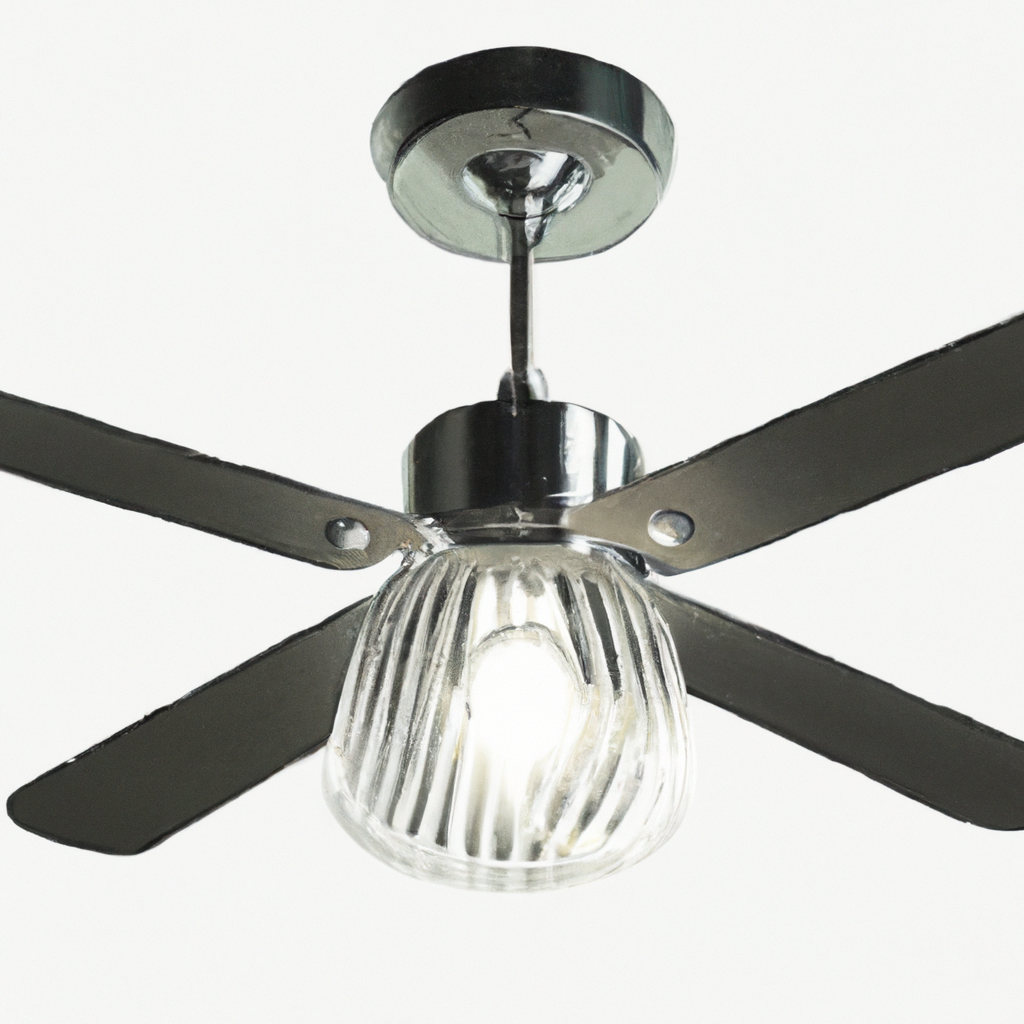You’ll be amazed at the numerous options available to effortlessly control your smart ceiling lights and fans in the bedroom. From voice commands to smartphone apps, there’s a solution for every preference. Whether you want to set the perfect ambiance for relaxation or wake up to a gently lit room, this article will guide you through the various methods to ensure your smart devices are in sync with your needs. Say goodbye to fumbling for light switches or reaching for a remote – let’s explore the world of convenience and comfort at your fingertips.

The Importance of Smart Ceiling Lights and Fans
Enhancing Comfort and Convenience
Smart ceiling lights and fans are valuable additions to any bedroom, as they provide enhanced comfort and convenience. With just a simple voice command or a tap on your mobile app, you can adjust the lighting and fan speed without having to get out of bed. This convenience factor is particularly beneficial for those cozy nights when you just want to relax and unwind without any hassle.
Energy Efficiency
Another significant advantage of smart ceiling lights and fans is their energy efficiency. These smart devices are designed to optimize energy consumption by allowing you to set schedules and customize settings to align with your lifestyle. This means you can save energy and reduce your electricity bills by ensuring that the lights and fans are only in use when needed, rather than being left on unnecessarily.
Enhanced Security
Smart ceiling lights and fans can also contribute to enhancing the security of your bedroom. With the ability to control the lights remotely, you can create an illusion of occupancy when you’re away from home. This can deter potential intruders and give you peace of mind knowing that your bedroom is secure. Additionally, some smart lights and fans can be integrated with security systems to provide an extra layer of protection.
Aesthetics and Ambiance
Beyond the practical benefits, smart ceiling lights and fans are also great for enhancing the aesthetics and ambiance of your bedroom. With the ability to adjust colors, brightness levels, and even create different lighting scenes, you can customize the atmosphere to suit your mood or activities. Whether you want a bright and energizing environment or a soft and relaxing ambiance, smart ceiling lights can provide the perfect lighting experience.
Ways to Control Smart Ceiling Lights and Fans
1. Voice Control
Voice control is one of the most convenient and popular ways to control smart ceiling lights and fans. By integrating your smart lights and fans with virtual assistants, such as Amazon Alexa or Google Assistant, you can control them simply by speaking commands. For example, you can say, “Hey Google, turn on the bedroom lights” or “Alexa, set the fan speed to medium.”
2. Remote Control
Remote control is another effective method for controlling smart ceiling lights and fans in your bedroom. Many smart ceiling fans come with a dedicated remote control that allows you to adjust the fan speed and turn the lights on or off from the comfort of your bed. This eliminates the need to get up and manually operate the switches on the wall.
3. Mobile Apps
Controlling smart lights and fans through dedicated mobile apps is a popular choice for many users. By downloading the app provided by the manufacturer, you can connect your smart devices to your smartphone or tablet and have full control at your fingertips. Through the app, you can adjust lighting colors, brightness levels, and fan speeds, as well as access additional features and customization options.
4. Wall Control Panel
If you prefer a more traditional control option, you can opt for a wall control panel for your smart ceiling lights and fans. This involves replacing your existing wall switches with smart switches or panels that are specifically designed for controlling smart devices. With a wall control panel, you can have a centralized control station for your lights and fans, eliminating the need for separate remotes or mobile apps.

1. Voice Control
Integration with Virtual Assistants
To utilize voice control for your smart ceiling lights and fans, you need to integrate them with a compatible virtual assistant. This typically involves connecting your virtual assistant device, such as an Amazon Echo or Google Home, to your smart lights and fans through the respective mobile apps. Once the integration is set up, you can use voice commands to control your lights and fans with ease.
Compatibility with Smart Speakers
It’s important to ensure that your smart lights and fans are compatible with the virtual assistant device you have or plan to purchase. Different brands may have different compatibility requirements, so double-check the product specifications and compatibility lists before making a purchase. This will ensure a seamless integration and optimal functionality.
Commands and Functionality
Once your smart ceiling lights and fans are integrated with a virtual assistant, you can start using voice commands to control them. You can turn the lights on or off, adjust the brightness, change the color (if applicable), and even control the fan speed. Each virtual assistant may have specific commands or phrases, so it’s a good idea to familiarize yourself with the command options and functionalities for a smooth experience.
2. Remote Control
Using a Smart Remote Control
If your smart ceiling fan comes with a dedicated remote control, you can easily control the lights and fan speed from the comfort of your bed. The smart remote control will have buttons for powering the lights on or off, adjusting the fan speed, and possibly additional features such as timer functions or light dimming options. Familiarize yourself with the layout and functionalities of the remote control for seamless operation.
Benefits of Remote Control
Remote control provides convenience and eliminates the need to manually operate switches on the wall. With a smart remote control, you can adjust the lighting and fan settings without having to get out of bed or reach for the wall switches. This makes it easier to create the perfect lighting and airflow conditions for your comfort and relaxation.

3. Mobile Apps
Setting up the Mobile App
To control your smart ceiling lights and fans through a mobile app, you need to first download and install the app provided by the manufacturer. Once installed, follow the app’s instructions to connect your smart devices to your smartphone or tablet using Wi-Fi or Bluetooth connectivity. This typically involves creating an account, adding your smart devices to the app, and configuring the necessary settings.
Controlling Lights and Fans with the App
Once set up, you can use the mobile app to control your smart ceiling lights and fans. The app will provide an intuitive interface where you can adjust brightness, change colors (if applicable), control fan speed, and activate additional features. Some apps also offer scheduling options, allowing you to set specific times for the lights and fans to turn on or off automatically.
Additional Features and Customization
Many mobile apps for smart ceiling lights and fans offer additional features and customization options to enhance your experience. This may include creating lighting scenes, where you can save specific settings and activate them with a single tap. Some apps also offer integration with other smart home devices, allowing you to create automation routines or control multiple devices simultaneously.
4. Wall Control Panel
Installation and Setup
To use a wall control panel for your smart ceiling lights and fans, you need to replace your existing wall switches with smart switches or panels. This typically requires basic electrical knowledge and skills. Consult the installation guide provided by the manufacturer for step-by-step instructions, or consider hiring a professional electrician for safe and efficient installation.
Controlling Lights and Fans with Wall Panel
Once the wall control panel is installed, you can control your smart ceiling lights and fans by simply pressing the buttons on the panel. The buttons will typically include options for turning the lights on or off, adjusting brightness levels, and controlling fan speed. Some advanced models may also offer additional features such as setting timers or activating preset scenes.
Integration with Other Smart Devices
Some wall control panels for smart ceiling lights and fans can also be integrated with other smart home devices. This allows you to create automation routines or control multiple devices from a single control point. For example, you can program the wall panel to turn off the lights, lower the fan speed, and adjust the room temperature simultaneously.

Factors to Consider When Choosing Smart Ceiling Lights and Fans
Smart Home Ecosystem Compatibility
Before purchasing smart ceiling lights and fans, it’s important to consider their compatibility with your existing smart home ecosystem, if you have one. Ensure that the lights and fans can seamlessly integrate with your existing smart devices, such as smart speakers, hubs, or home automation systems. This will ensure a cohesive and interconnected smart home experience.
Connectivity Options
Smart ceiling lights and fans typically offer different connectivity options, such as Wi-Fi, Bluetooth, Zigbee, or Z-Wave. Consider your specific requirements and preferences when choosing the connectivity option. Wi-Fi connectivity offers broader compatibility and remote control capabilities, while Bluetooth connectivity may require close proximity for reliable operation. Zigbee or Z-Wave connectivity allows for mesh networking and extended range.
Control Options
Evaluate the control options available for the smart ceiling lights and fans you are considering. Determine whether you prefer voice control, remote control, mobile app control, or a wall control panel. Some models may offer multiple control options, providing flexibility and convenience based on your preferences.
Additional Features
Consider the additional features offered by the smart ceiling lights and fans. This can include features like dimming functionality, color-changing capabilities, scheduling options, and compatibility with other smart devices. Choose features that align with your needs and preferences, as they can greatly enhance your overall experience with the smart devices.
Installation and Setup
Take into account the installation and setup requirements of the smart ceiling lights and fans. Some models may be designed for easy DIY installation, while others might require professional assistance. Additionally, consider the syncing and pairing process involved in connecting the devices to your chosen control method, whether it’s a virtual assistant, remote control, mobile app, or wall control panel. Familiarize yourself with the installation and setup procedures to ensure a smooth and successful experience.
1. Smart Home Ecosystem Compatibility
Integration with Existing Smart Devices
When choosing smart ceiling lights and fans, ensure compatibility with other smart devices you already have in your home. This allows for seamless integration and the ability to control multiple devices through a centralized system. Check the compatibility lists and protocols supported by the smart lights and fans to ensure they can be easily integrated with your existing smart home ecosystem.
Interoperability with Different Brands
Consider the interoperability of the smart ceiling lights and fans with smart devices from different brands. Ideally, you should choose devices that use open standards or protocols, such as Zigbee or Z-Wave, as these allow for better compatibility between devices from different manufacturers. This ensures that your smart lights and fans can work alongside other smart devices, creating a cohesive and interoperable smart home.

2. Connectivity Options
Wi-Fi Connectivity
Wi-Fi connectivity is a popular option for smart ceiling lights and fans, as it provides a reliable connection and allows for remote control capabilities. With Wi-Fi connectivity, you can control your lights and fans from anywhere with an internet connection, using voice commands or mobile apps. However, it’s important to ensure that your Wi-Fi network has sufficient coverage and bandwidth to support the smart devices.
Bluetooth Connectivity
Bluetooth connectivity is another commonly used option for smart ceiling lights and fans. With Bluetooth, you can control the devices directly from your smartphone or tablet without the need for a hub or internet connection. Bluetooth connectivity is generally reliable within a certain range, making it suitable for smaller spaces like bedrooms. However, keep in mind that the range may be limited compared to Wi-Fi.
Zigbee or Z-Wave Connectivity
Zigbee and Z-Wave are wireless communication protocols commonly used in smart home devices. They offer mesh networking capabilities, allowing for extended range and better reliability. With Zigbee or Z-Wave connectivity, you can create a network of smart devices that can communicate with each other, even if they are far apart. This can be beneficial if you have a larger bedroom or want to expand your smart home setup in the future.
5. Installation and Setup
DIY Installation or Professional Installation
Consider whether you prefer to install the smart ceiling lights and fans yourself or opt for professional installation. DIY installation can save you money and give you a sense of accomplishment, especially if you have experience with electrical work. However, if you’re unsure about the installation process or don’t have the necessary skills, it’s recommended to hire a professional electrician to ensure a safe and proper installation.
Syncing and Pairing Devices
During the setup process, you’ll need to sync and pair your smart ceiling lights and fans with your chosen control method, whether it’s a virtual assistant, remote control, mobile app, or wall control panel. Each device may have its own specific instructions for syncing and pairing, so carefully follow the manufacturer’s guidelines to ensure a successful setup. Take your time and troubleshoot any issues that may arise.
Troubleshooting and Technical Support
In case you encounter any difficulties during installation, syncing, or general operation of the smart ceiling lights and fans, it’s important to have access to reliable troubleshooting resources and technical support. Check if the manufacturer provides comprehensive user guides, FAQs, or customer support channels to assist you in resolving any issues. This will ensure that you can enjoy the benefits of your smart devices without frustration.
